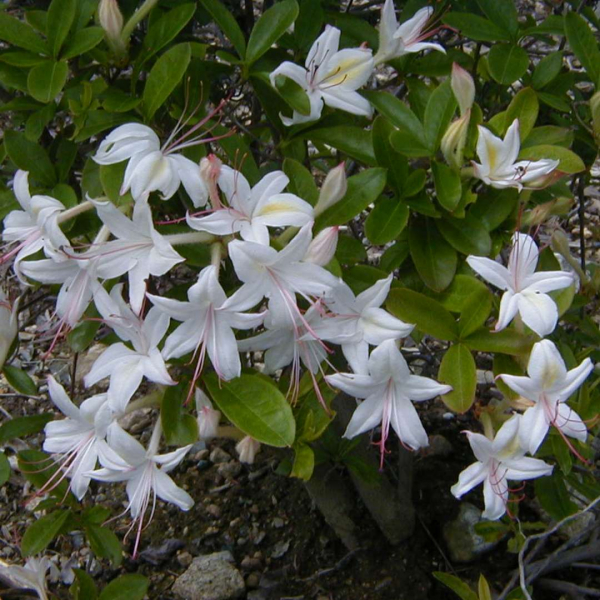On Sunday, I took my dog on a long walk. The weather was beautiful and all the trees, shrubs and flowers are really starting to make each and every landscape look alive. As a plant geek I really enjoy looking at how people use the various plants in their yards. Every one of us has different tastes and likes which makes each landscape vary enough so they become interesting to the eye. What really stood out for me was the abundant smells in the air.
For most of us, the smells that plants produce create an enjoyable feeling. When you are designing, it really is important to include plants where our senses can be tantalized. Fragrances can come from various parts of plants, whether it is their flowers, stems or leaves. In spring we are fortunate to have so many plants blooming at the same time. Sometimes the aroma can be too much for us to take. The best way to include fragrance in the garden is to have plants that bloom at different times of the year.

Most of us know that a lilac, rose and lavender are sweet surrenders. But did you realize that climbing hydrangeas, water lilies and crabapple trees also qualify as fragrant plants, trees and perennials? If you are looking to add some fragrance into your landscape here are my top 10.
1. Mayflower and Burkwood Viburnums produce a small ball shaped blossom with outstanding fragrance in April/May. Besides the blooms the foliage is attractive, turning red in the fall before it falls to the ground for the winter.
2. The Butterfly Bush provides sweet fragrance to attract butterflies throughout the summer. There are many colors to choose from and many varieties available that will stay small or grow large depending on what you are looking for in the garden. Most don’t stop blooming until late in the fall.
3. Witchhazel is an interesting plant which blooms for several weeks in February/March. When you look out at the winter landscape, there it is blooming and adding fragrance at the same time. Most grow into a large shrub so you will need some space for it to develop. Place it near a window so you enjoy the fragrance in late winter.
4. Certain magnolias produce an outstanding fragrance. As the tree grows into some size the smell drifts throughout the yard. Definitely a tree to give you fragrance at the beginning of spring.
5. There are hundreds of varieties of Daylilies (Hemerocalis) available. Many have fragrant blooms. One of the advantages when using daylilies in the landscape is color from the flowers throughout the summer. Combine that with fragrance and every yard will smell outstanding.
6. Peonies are one of my wife’s favorite flowers. They are showy, very fragrant, and are
beautiful in indoor arrangements because they last a long time. Plant in massing to get best results. They bloom mid to late May.
7. Honeysuckle and Wisteria are excellent vines which will make any fence or wall become more attractive while providing a sweet smell.
8. Bee Balm (Monarda) is another perennial which attracts butterflies. Blooming in the summertime. Many new varieties available which are powdery mildew resistant so you enjoy the flowers and foliage without having to spray.
9. Weston’s Lemon Drop, Weston’s Lollipop and Weston Weston’s Innocence Azaleas are a few of the summer blooming azaleas available which add intense fragrance in late June. Fall leaf color is red.
10. Dianthus is grown for their pink, white, or red, spicy fragrant flowers and their often-evergreen clumps or mats of gray-blue, grassy leaves. Taller types are excellent for cutting. Dianthus includes both annual and perennial types.
This is a small list of plants which offer fragrance into the landscape. Many children love the smell of flowers and including fragrant plants into the landscape is an easy way to get your family involved in gardening. Another advantage of using fragrant plants is the ability of cutting the stems for indoor fragrance. Perfumes are nothing compared to the real thing, so add some fragrance to your landscape gardens today.








